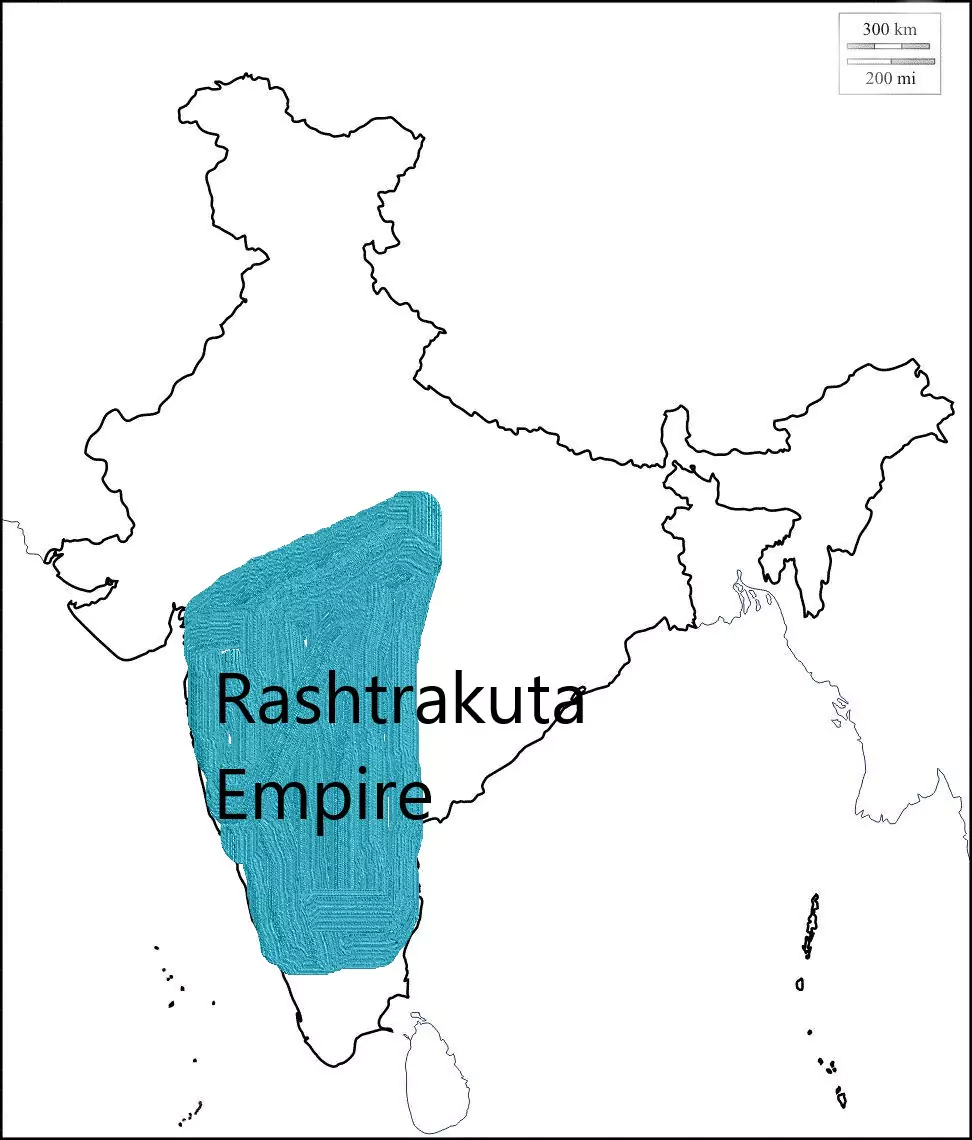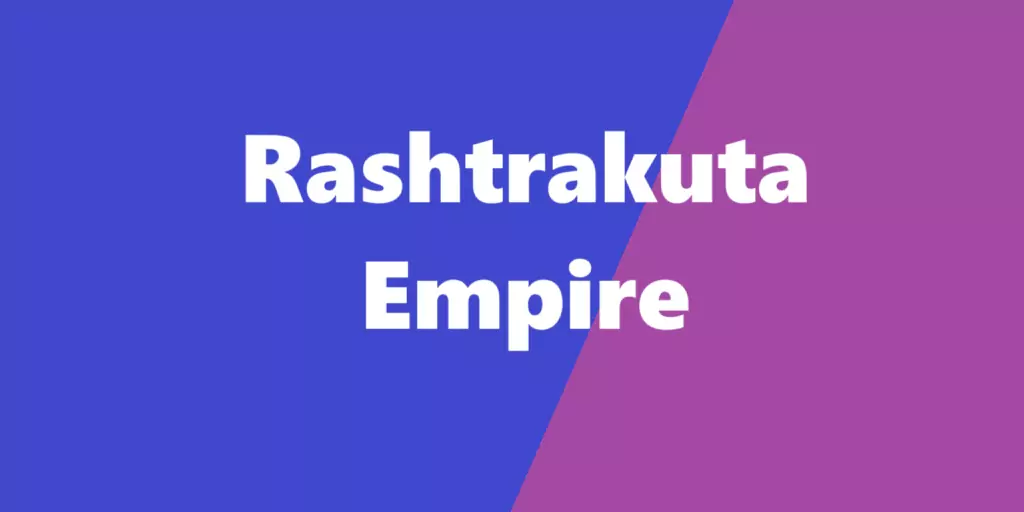The Rashtrakuta Dynasty (GK+Notes) was an Indian dynasty that ruled over large parts of the Indian subcontinent between the 6th and 10th centuries CE. This article talks about the “Rastrakuta Dynasty” helpful for UPSC and other competitive examinations.
Rashtrakuta Dynasty Key points
- Origin: The Rashtrakutas originally served the Badami Chalukyas rulers and gradually gained power to set up their own empire..
- Founder: Dantidurga is considered the founder of the Rashtrakuta Dynasty. He defeated the Chalukyas and started the Rashtrakuta Empire in 753 CE.
- Capital: The early Rashtrakuta capital was Manyakheta in Karnataka. Later the capital moved to Kalyani (Basavakalyan) and Manyakheta.
- Extent: The Rashtrakuta Empire covered areas including Karnataka, Maharashtra, Gujarat, Madhya Pradesh, and Andhra Pradesh.

Rashtrakuta Dynasty Emperors
| Rashtrakuta Kings (753 CE – 982 CE) | reign |
|---|---|
| Dantidurga | (735 – 756) |
| Krishna I | (756 – 774) |
| Govinda II | (774 – 780) |
| Dhruva | (780 – 793) |
| Govinda III | (793 – 814) |
| Amoghavarsha | (814 – 878) |
| Krishna II | (878 – 914) |
| Indra III | (914 -929) |
| Amoghavarsha II | (929 – 930) |
| Govinda IV | (930 – 936) |
| Amoghavarsha III | (936 – 939) |
| Krishna III | (939 – 967) |
| Khottiga Amoghavarsha | (967 – 972) |
| Karka II | (972 – 973) |
| Indra IV | (973 – 982) |
Dantidurga:
- The Rashtrakutas originally originated as feudatories under the Chalukya kings.
- Dantidurga was the founder of this dynasty.
- Dantidurga conquered all of the territory between the Godavari and the Vima.
- It is stated that he conquered Chalukya King Kirtivarma and took control over Maharashtra, as well as Kalinga, Kosala, Kanchi, Srisril, Malava, Lata, and other places.
First Krishna:
- After Dantidurga’s death in 756 AD, his uncle Krishna I ascended the throne.
- He finally defeated the Chalukya King Kirtivarman II of Batapi.
- Additionally, Krishna I defeated the Ganga ruler of Mysore and Vishnuvardhana of Vengi.
Second Govinda:
- Krishna I was succeeded by his eldest son Govinda II.
- He assumed the titles of Prabhutavarsha, Vikramabaloka, Vallabha etc.
- He was dethroned by his younger brother Dhruva in 779 AD.
Dhruva Dharavarsha:
- He was the first of the Rashtrakuta kings to directly participate in North Indian politics and entered into a tripartite conflict with Pratihararaja Vatsaraja and Pala king Dharmapala to establish his supremacy.
- He assumed the titles of Nirupama, Dharavarsha, Kali etc.
Govinda III:
- Govinda III ascended the throne in 793 AD defeating the elder brother Stambha.
- He advanced toward North India and defeated Pratihara King Nagabhatta II and acquired Malab.
- Then Chakrayudha, ruler of Kanauj and Pala king Dharmapala submitted to him.
Amoghavarsha:
- During the 64-year reign of Govinda III’s son Sarva or Amoghavarsha I, he had to deal with several rebellions.
- During his reign, the Ganga kingdom and Malab were overthrown by the Rashtrakutas.
- He was a patron of literature and culture.
- He wrote two books in Kannada called ‘Kavirajamarga‘ and ‘Prashnottara Ratnamalika‘.
Krishna II:
- After the first Amoghavarsha, his son Krishna II ascended the throne.
- He assumed the titles Shubhatunga and Akalavarsha.
- He established matrimonial relations with the Chola kings and married his daughter to the Chola king Aditya I.
Third Indra:
- Indra III defeated Pratihararaja Mahipala and destroyed the city of Kanauj in 915 AD.
- On his way back to the Deccan he captured Ujjain.
- Al Masudi, an Arab traveler who came to India at that time, identified him as the best Rashtrakuta king.
Krishna III:
- King Krishna III is the last notable king of this dynasty.
- He defeated the Chola king Parantaka I at the Battle of Takkelam in 949 AD and captured the northern part of the Chola Empire.
- He captured the Pallava capital of Kanchi and the Chola city of Tanjore and established the Vijayasthamba at the Rameshwar Setubandha.
Literature under Rashtrakutas
- Literature during the reign of the Rashtrakuta kings was mainly in Kannada language. Most of them contain texts and inscriptions. But at the same time, Sanskrit language, literature and royal patronage were acquired.
- Nalachampu is written by Trivikrama Bhatta.
- Kavirahasya was written by Halayudha during Krishna III’s reign.
- Parsvabhudaya is a verse-based biography of Parsva written by Jinasena.
- The Adipurana, which tells the tales of several Jain saints, was penned by Jinasena.
- Sakatayana wrote the grammatical text Amogavritti.
- Ganitasaram was written by the renowned mathematician of this era, Viracharya.
- The Kannada literary tradition began during the Rashtrakuta dynasty.
- Amogavarsha’s Kavirajamarga was the first piece of poetry written in Kannada.
- The most well-known poem of Pampa, who was the best Kannada poet, is Vikramasenavijaya.
- Another outstanding work by Ponna, a well-known Kannada poet, is Santipurana.
- Pampa, Panna and Ranna are known as ‘Triratna‘ in Kannada poetic literature.
Art and Architecture
- Ellora Caves: The Ellora Caves, a UNESCO World Heritage Site, contain some of the finest examples of Rashtrakuta architecture.
- Kailasanatha Temple: Built in the 8th century under King Krishna I. It is dedicated to Lord Shiva. Considered one of the largest monolithic structures in the world.
- Elephanta Caves: Not directly built by the Rashtrakutas. Elephanta Caves near Mumbai date back to the Rashtrakuta period and exhibit similar architectural styles.
Decline: The Rashtrakuta capital Malkhed/Manyakshet was destroyed in 972 and the Rashtrakuta Empire came to an end. In 974-75, the second Taila feud of the Rashtrakutas brought an end to the Rashtrakuta Empire and the beginning of the Chalukya dynasty of Kalyani.
